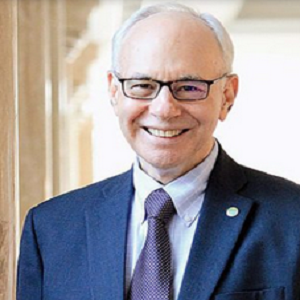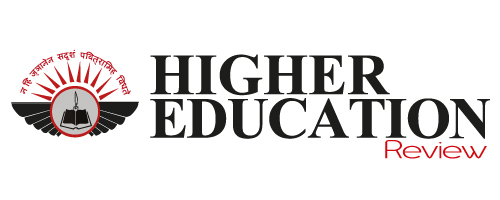Towards a Global Education System: Accessible, Affordable, & Inclusive
 Garry Jacobs, President & CEO, World Academy of Art & Science in the 7th International Conference on FUTURE EDUCATION shared his insights on the vision of creating a global education system that is accessible to everyone aspiring to learn and acquire knowledge, how achieving this would require education to be not only locally available but also affordable and globally accessible and more.
Garry Jacobs, President & CEO, World Academy of Art & Science in the 7th International Conference on FUTURE EDUCATION shared his insights on the vision of creating a global education system that is accessible to everyone aspiring to learn and acquire knowledge, how achieving this would require education to be not only locally available but also affordable and globally accessible and more.
Education is the single most powerful institution or invention, that humanity has ever created. This is because Education is the organization we have created to take the cumulative experience of all past generations of humanity going back thousands of years to the extent that we know it and we have recorded it or we have recovered it, and passed it on to the next generation. Therefore, we need not reinvent all the discoveries of the past. We need not reinvent the wheel or discover fire again, or even the computer, or even the internet.
We can pass on to the next generation all that our forefathers have given us so that the next generation can start off from where we left off, and hopefully not have to repeat all of the mistakes which we have made in the past, all of the errors, or reinvent things that we have already invented, but you can start and blaze a greater future for humanity. Therefore, this meets the description of a remarkable invention that has an impact on all the people in the world, at least all who have access to this wonderful gift that our forefathers have left for us.
However, education also poses an extraordinary challenge to us. Although it is a great opportunity, it is an extraordinary challenge. Moreover, the younger generation today, faces greater challenges in a sense than any generation before, simply because the pace of our social change, technological change, knowledge generation, the multiplication of knowledge and data is growing so quickly. There is more and more to know, and it's changing rapidly.
Therefore, the challenges for youth today are how are we to cope with, absorb, have access to and learn all that we need to live a better future in a world that is changing so rapidly? Thus, you can all identify with this just for what we have seen in the last couple of years with the explosive growth of artificial intelligence. Because those who have not gone through the system, those who have not learned the powers of AI and how to utilize it properly, are left behind. Or they must quickly now try to catch up, whether they are age 25 or 30 or 40 or 50, because the world is changing and we need to keep pace with those changes.
Education: A Powerful Tool Facing Major Challenges
Education is not just the most powerful instrument we have, but it faces the greatest challenges. And those challenges are of many types. One of them for our mathematicians is a quantitative challenge, because not only is the volume of knowledge increasing very rapidly, but the population of the world is growing rapidly and this means our capacity to educate quantitatively, everyone who wants it, has to grow very rapidly as well.
Today, about 42% of the world's college-age population, (18 to 23 or 18 to 24), about 42% of the world's population in this age group have access to higher education. In some countries like the United States, it's 80% or more, and a few in Scandinavia as well. The average in Europe, among all the EU countries, is about 60%. The average in the world is only 42%. I live in South India, where the average is 27% and there are countries in sub-Saharan Africa, where it is only about 10 or 12%. What does this mean? If we want every youth in the world to have the same opportunities as those who are in the most advanced countries, it means, as a minimum, we would need to double the global capacity of our higher educational system to meet the needs of this and future generations and those future generations are growing, which means we need more capacity than before.
Progress & Unresolved Challenges
It does not only need more capacity, but needs more quality of education and this means, if credit can be created, the world has developed remarkably in the last two centuries, even more so in the last 50 years, even more so at a faster rate in the last 10 years, and it would normally attribute much of this to advances in science and technology, whether it is in healthcare or computing power or telecommunications power or productivity, this would be attributed to the rising levels of education and knowledge in the world.
However, if that is the case, then we must also ask, how come with all of this growth of knowledge, how come with all of this growth of technology, everything is not marvellously improved? How come we still have violence in the world, wars in the world, poverty in the world, unemployment in the world, people who feel afraid of the future, and rising insecurity instead of greater security than before, not everywhere, but in many places that is where even in the most prosperous countries. So we have to also say if knowledge and education have helped us advance so much, it must also be somehow contributing to our problems.
There must be something wrong with or limited to the kind of education that we have all received, that we have not been able to solve all our problems and make them all disappear. Thus, the challenge for education today and all those who study and conduct research in all fields, in all disciplines is – “What do we don't know, that we need to know?” What is wrong with the way we are thinking? Einstein was very famed for his statement; that you cannot solve problems by the same way of thinking that you created the problems. Therefore, we seem to be creating problems as fast as we are solving them.
Costs, and the Role of Emerging Technology in Education
Today there is no need for more education, but we need a higher level of education, a higher level of knowledge and understanding of ourselves and the world we live in. Thus, education is not just a great power, it is undergoing great challenges. If we want to meet the needs, the aspirations of every young person on Earth, just a little information, to put in place, to expand our educational capacity by a hundred million youth, we would need to spend about two and a half trillion dollars just to build the facilities.
We have to spend about three trillion dollars a year on the operating of those new youth and if we have to do that every year, we are talking about in five years a fabulous amount that we need to spend to expand educational quality, even at this level. So something needs to change. If we are going to meet all our needs, it's not just a matter of expanding the system; we have to be upgrading the system. Also, because whatever we learn in the institution today or next year is not going to be fully sufficient if we calculate it for the next three years or five years or ten years from now. The idea when I graduated from the university was you finish your education and now you live your life. But life today is unrecognizably different than it was during our college days. How are we going to keep pace with the rapid changes, and continued changes in education today with the growing speed of the knowledge that's today? I'm raising these issues because that's the reason for this conference.
The purpose of this conference is to ask the question if we want to create a global system of education that would make it available to everyone who wants it, and who aspires to learn more knowledge. And to make it available means it is not enough that it is available locally, it must be affordable, and it must be accessible to everybody in the world. That would mean it should be available in many languages in the world because not everyone can take it in English or in Turkish or any other language. So how could we do it? How would we do it? However, today we have the possibility of extending the greatest knowledge to future generations at a much lower cost, a fraction of the cost of doing it now, so that it can be ongoing and accessible to people everywhere in the world and in any language, and interact with them in a responsive way that we have not seen before and we believe the emerging technology makes this possible too.

